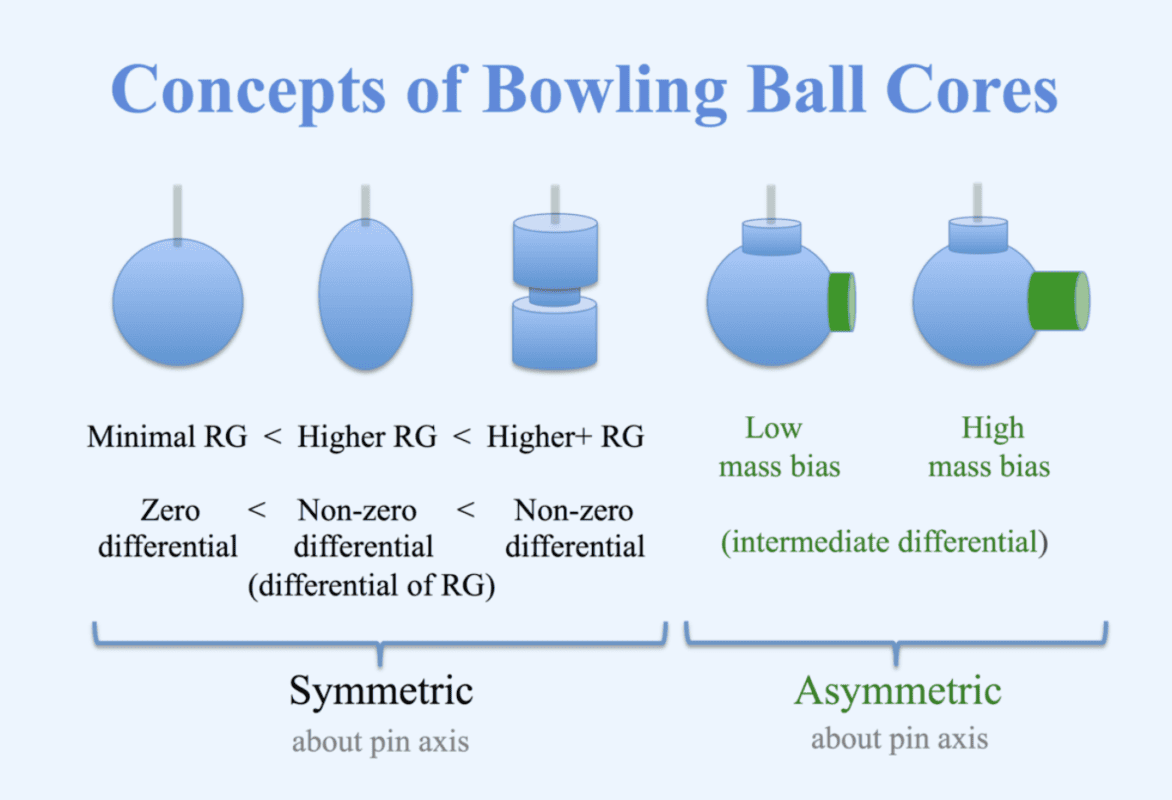Understanding bowling ball motion is an important aspect of the sport, as it can help bowlers choose the right ball and make the necessary adjustments to achieve the desired result on the lanes. Here are a few key concepts to understand when it comes to bowling ball motion:
Hook potential: The hook potential of a bowling ball refers to its ability to change direction as it travels down the lane. Higher hook potential balls tend to have more back-end reaction, meaning they will hook more at the end of the lane. Lower hook potential balls tend to be more predictable and smoother.
Back-end reaction: Back-end reaction refers to the way a bowling ball behaves at the end of the lane. Balls with high hook potential tend to have a lot of back-end reaction, meaning they will hook more as they approach the pins. Balls with low hook potential tend to have less back-end reaction and behave more predictably.
Lane condition: The condition of the lanes can also affect the motion of the ball. Dry lanes tend to produce less back-end reaction, while oiled lanes tend to produce more back-end reaction.
Speed: The speed at which you release the ball can also affect its motion. Faster speeds tend to produce more back-end reaction, while slower speeds tend to produce less.
By understanding these concepts, bowlers can make informed decisions about which ball to use and how to adjust their delivery based on the conditions of the lanes.
What does the core of a bowling ball do?
The core of a bowling ball is the innermost part of the ball, located between the coverstock (outer surface) and the weight block (material that determines the ball’s weight). The core plays a key role in determining the ball’s performance characteristics, including its hook potential, back-end reaction, and overall balance.
There are several different types of cores used in bowling balls, including asymmetrical cores, symmetrical cores, and reactive cores. Asymmetrical cores are designed to produce different levels of hook potential and back-end reaction depending on the direction the ball is rolling. Symmetrical cores are designed to produce a similar level of hook potential and back-end reaction in both directions. Reactive cores are made from a reactive material that absorbs oil and produces more back-end reaction on oily lanes.
The core of a bowling ball also plays a role in determining the ball’s weight distribution, which can affect its balance and overall performance. Some cores are designed to be top-heavy, which can help produce more hook potential and back-end reaction. Others are designed to be more evenly balanced, which can help produce a smoother, more predictable motion.
Overall, the core of a bowling ball plays a crucial role in determining the ball’s performance characteristics and helping bowlers choose the right ball for their style and the conditions of the lanes.
As found on Youtube
Asymmetrical core bowling balls
Asymmetrical cores are a type of core used in bowling balls that are designed to produce different levels of hook potential and back-end reaction depending on the direction the ball is rolling. These cores are characterized by having an uneven weight distribution, with one side being heavier than the other.
Asymmetrical cores are often used in high-performance bowling balls and are typically favored by advanced bowlers who want more versatility and control over their shots. They can help produce a wide range of ball motions, from smooth and predictable to sharp and angular, depending on the ball’s layout (arrangement of the weight block) and coverstock (outer surface).
One of the benefits of asymmetrical cores is that they can help bowlers adjust their ball’s reaction on the lanes by changing the ball’s layout or coverstock. For example, a ball with an asymmetrical core and a reactive coverstock might produce more back-end reaction on oily lanes, while the same ball with a less reactive coverstock might produce less back-end reaction on dry lanes.
Overall, asymmetrical cores are a popular choice among advanced bowlers who want more control and versatility in their ball selection and are willing to spend the time and effort to experiment with different layouts and coverstocks.

Symmetrical cores bowling balls
Symmetrical cores are a type of core used in bowling balls that are designed to produce a similar level of hook potential and back-end reaction in both directions. These cores are characterized by having an evenly distributed weight, with both sides of the core being the same weight.
Symmetrical cores are often used in mid-performance and entry-level bowling balls and are typically favored by bowlers who want a more predictable and consistent ball motion. They can help produce a smooth, controlled ball motion that is less affected by the lanes and more forgiving of minor errors in delivery.
One of the benefits of symmetrical cores is that they are generally easier to use and require less experimentation with layouts and coverstocks. This can make them a good choice for bowlers who are just starting out or who want a more straightforward ball selection process.
Overall, symmetrical cores are a popular choice among bowlers who want a more predictable and consistent ball motion and are willing to trade some versatility for simplicity.
How to hook a bowling ball?
Hooking a bowling ball refers to the ability of the ball to change direction as it travels down the lane. A ball that hooks more will have a more curved trajectory, while a ball that hooks less will have a straighter trajectory.
There are several factors that can affect the hook potential of a bowling ball, including the ball’s coverstock (outer surface), core, weight block, and layout (arrangement of the weight block). Other factors that can affect hook potential include the condition of the lanes (oily lanes tend to produce more hook), the speed at which the ball is delivered, and the bowler’s release technique.
To hook a bowling ball, bowlers can try the following techniques:
Use a ball with a reactive coverstock: Balls with reactive coverstocks (made from a reactive material that absorbs oil) tend to hook more on oily lanes.
Use a ball with a high hook potential: Some balls are designed to hook more than others. Look for a ball with a high hook potential if you want to produce more hook.
Use a ball with an asymmetrical core: Asymmetrical cores (cores with an uneven weight distribution) tend to produce more hook potential than symmetrical cores (cores with an evenly distributed weight).
Adjust your grip and release: Adjusting the way you grip and release the ball can also affect the ball’s hook potential. Experiment with different grip styles and releases to see what works best for you.
Adjust your speed: Slower speeds tend to produce less hook, while faster speeds tend to produce more hook. Experiment with different speeds to find what works best for you.
Overall, hooking a bowling ball requires a combination of choosing the right ball and developing the right technique. With practice and experimentation, you can learn to control the hook potential of your shots and become a more effective bowler.
Conclusion
Picking the right ball for you will depend on a few factors. As mentioned above, lane conditions, ball speed, type of ball, and your bowling style should all be factored in. You need to determined what you want the ball to do in relation to the type of lane pattern you will be bowling on. What works for one bowler may not work for another. Speaking to an experienced ball driller at your local pro shop is probably the best starting point when trying to decide what bowling ball you should get.
